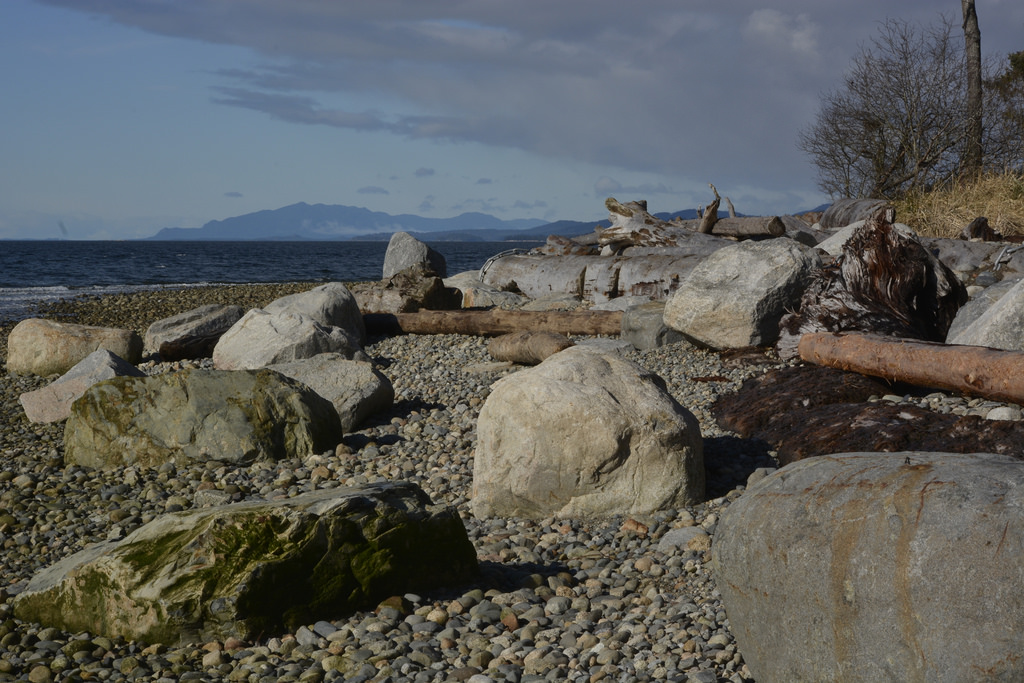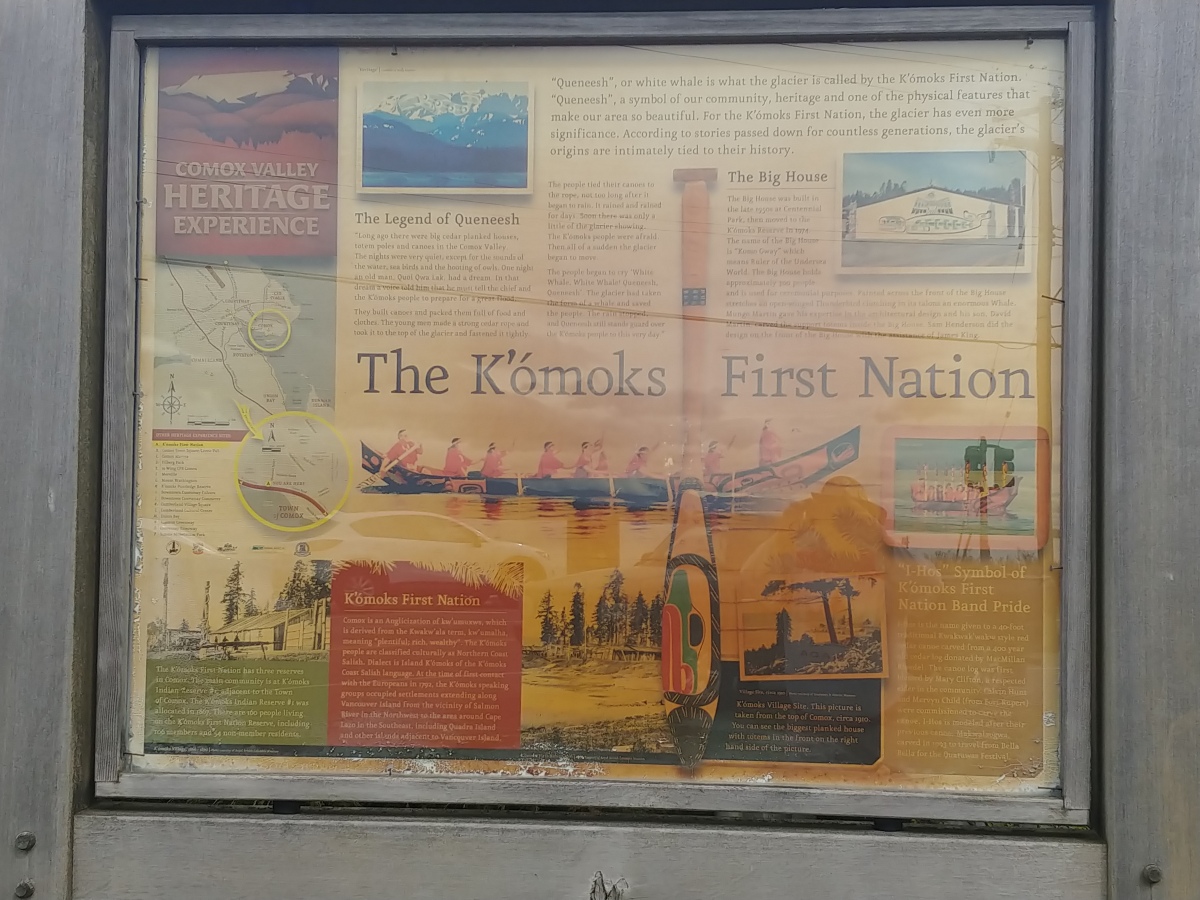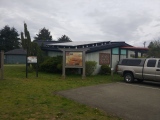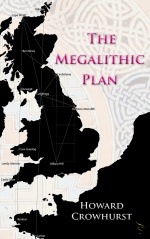<< Our Photo Pages >> Comox Estuary - Ancient Village or Settlement in Canada
Submitted by bat400 on Friday, 17 November 2006 Page Views: 10946
Multi-periodSite Name: Comox EstuaryCountry: Canada
NOTE: This site is 4.002 km away from the location you searched for.
Type: Ancient Village or Settlement
Nearest Town: Comox, BC
Latitude: 49.675900N Longitude: 124.9577W
Condition:
| 5 | Perfect |
| 4 | Almost Perfect |
| 3 | Reasonable but with some damage |
| 2 | Ruined but still recognisable as an ancient site |
| 1 | Pretty much destroyed, possibly visible as crop marks |
| 0 | No data. |
| -1 | Completely destroyed |
| 5 | Superb |
| 4 | Good |
| 3 | Ordinary |
| 2 | Not Good |
| 1 | Awful |
| 0 | No data. |
| 5 | Can be driven to, probably with disabled access |
| 4 | Short walk on a footpath |
| 3 | Requiring a bit more of a walk |
| 2 | A long walk |
| 1 | In the middle of nowhere, a nightmare to find |
| 0 | No data. |
| 5 | co-ordinates taken by GPS or official recorded co-ordinates |
| 4 | co-ordinates scaled from a detailed map |
| 3 | co-ordinates scaled from a bad map |
| 2 | co-ordinates of the nearest village |
| 1 | co-ordinates of the nearest town |
| 0 | no data |
Internal Links:
External Links:

Wooden stakes, shaped by stone tools, were driven into the mudflats to form short stockade-like traps to catch fish as the tide went out. Over the passage of time the portions of abandoned traps that remained under the surface of the water covered mud have been preserved. Carbon dating indicates the same basic structures have been built and used up into historic times.
Clam gardens are terraced areas built so that sand is retained by rock walls, yet is still covered by water at each high tide.
The site location is only general for the area. There are many such sites near Comox.
Note: For more information see the article from the Campbell River Mirror.
You may be viewing yesterday's version of this page. To see the most up to date information please register for a free account.







Do not use the above information on other web sites or publications without permission of the contributor.
Click here to see more info for this site
Nearby sites
Click here to view sites on an interactive map of the areaKey: Red: member's photo, Blue: 3rd party photo, Yellow: other image, Green: no photo - please go there and take one, Grey: site destroyed
Download sites to:
KML (Google Earth)
GPX (GPS waypoints)
CSV (Garmin/Navman)
CSV (Excel)
To unlock full downloads you need to sign up as a Contributory Member. Otherwise downloads are limited to 50 sites.
Turn off the page maps and other distractions
Nearby sites listing. In the following links * = Image available
1.7km SSW 205° Comox Harbor Ancient Fish Trap* Ancient Mine, Quarry or other Industry
35.5km ENE 60° Pictographs near Powell River ferry terminal Rock Art
43.0km S 176° Sproat Lake Petroglyphs* Rock Art
68.3km NNW 343° Ancient clam gardens on Quadra Island* Ancient Mine, Quarry or other Industry
87.1km E 93° Salmon Inlet Barrow Cemetery
89.9km ESE 104° shíshálh Nation tems swiya Museum Museum
95.5km SE 128° Petroglyph Provincial Park (British Columbia)* Rock Art
98.1km ESE 123° Lock Bay Site* Rock Art
103.4km SE 126° Cedar by the Sea Petroglyphs* Rock Art
107.8km ESE 123° Degnen Bay Site* Rock Art
130.8km ESE 110° Museum of Anthropology - University of British Columbia* Museum
136.4km ESE 107° Skalsh Rock* Rock Outcrop
136.6km ESE 107° Coast Salish Stone Fish Weir* Stone Row / Alignment
138.4km ESE 107° Xwayzway Village* Ancient Village or Settlement
147.9km S 170° Makah Cultural and Research Center Museum
152.6km ESE 118° Tsawwassen Long House Site* Ancient Village or Settlement
156.8km ESE 111° Sewqueqsen Settlement at St.Mungo Cannery* Ancient Village or Settlement
157.1km ESE 111° Glenrose Cannery* Ancient Village or Settlement
168.5km S 174° Ozette Ancient Village or Settlement
170.7km S 174° Wedding Rock* Rock Art
172.3km ESE 114° P'Quals White Rock* Natural Stone / Erratic / Other Natural Feature
185.1km SE 145° Race Rocks Ecological Reserve* Ring Cairn
203.5km SSE 147° Tse-whit-zen Barrow Cemetery
204.3km ESE 106° Xaytem Ancient Native Settlement* Ancient Village or Settlement
212.6km ESE 108° Sumas Lightning Rock* Natural Stone / Erratic / Other Natural Feature
View more nearby sites and additional images






 We would like to know more about this location. Please feel free to add a brief description and any relevant information in your own language.
We would like to know more about this location. Please feel free to add a brief description and any relevant information in your own language. Wir möchten mehr über diese Stätte erfahren. Bitte zögern Sie nicht, eine kurze Beschreibung und relevante Informationen in Deutsch hinzuzufügen.
Wir möchten mehr über diese Stätte erfahren. Bitte zögern Sie nicht, eine kurze Beschreibung und relevante Informationen in Deutsch hinzuzufügen. Nous aimerions en savoir encore un peu sur les lieux. S'il vous plaît n'hesitez pas à ajouter une courte description et tous les renseignements pertinents dans votre propre langue.
Nous aimerions en savoir encore un peu sur les lieux. S'il vous plaît n'hesitez pas à ajouter une courte description et tous les renseignements pertinents dans votre propre langue. Quisieramos informarnos un poco más de las lugares. No dude en añadir una breve descripción y otros datos relevantes en su propio idioma.
Quisieramos informarnos un poco más de las lugares. No dude en añadir una breve descripción y otros datos relevantes en su propio idioma.